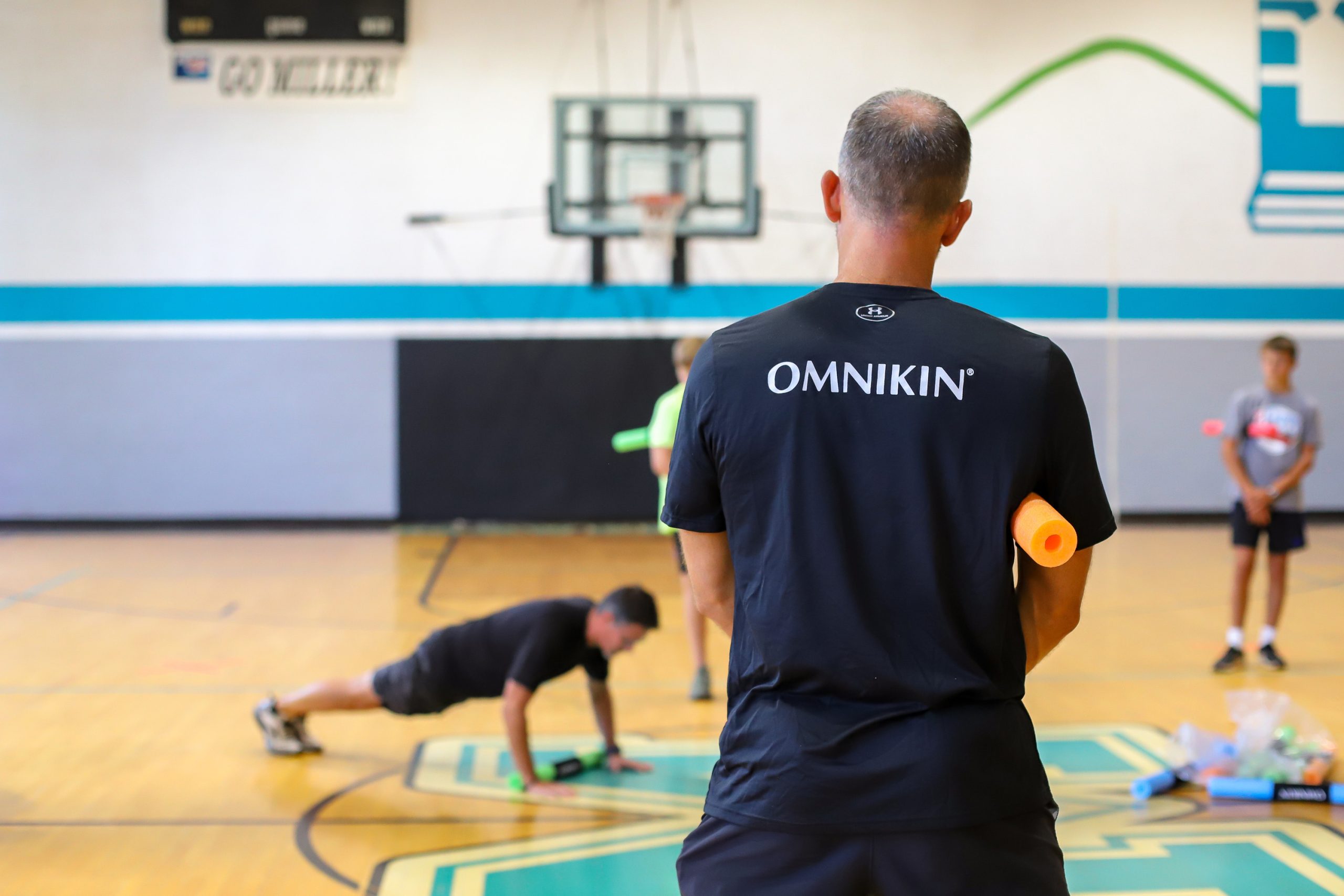
One of the biggest shifts in physical education (PE) in recent years has been adapted physical education (APE) classes and inclusive programs which require everyone to be active, regardless of physical and cognitive capabilities. APE has become increasingly important so that students with special needs can be either integrated into a PE class with other classmates or attend specialized classes with adapted PE program.
But why is adapted physical education so important?
Adapted Physical Education: Tremendous Potential for Kids Around the World
The United Nations’ Convention on the Rights of Persons with Disabilities describes people with disabilities as those who have long-term physical, mental, intellectual or sensory impairments which in interaction with various barriers may hinder their full and effective participation in society on an equal basis with others.
According to the World Health Organization, 15% of the world’s population live with a disability, making these people the world’s largest minority. UNICEF estimates the number of children with disabilities around the world is approximately 240 million.
Children with disabilities face enormous challenges at school. One disability expert points to a lack of individualization, whereby recent UNESCO report showed that “learners with disabilities were as or more likely than their non-disabled peers to be victims of school violence and bullying, in some cases significantly more.”
This rings especially true in physical education. Due to their restricted physical or cognitive abilities, disabled people are often barred from PE classes or face extreme negative perceptions and discrimination. Some schools simply don’t have the funding for appropriate equipment or accessible facilities. Still other school districts have inconsistent measures for inclusion, lack of qualified personnel, or even a proper understanding of the needs of this special clientele.
Adapted Physical Education: A Viable Means to Promote Healthy Living and Cater to Special Needs Children
While the history of adapted physical education varies from country to country, the term “adapted physical education” emerged in the United States when the United States Congress created the Individuals with Disabilities Education Act (IDEA) in 1975. This act purported that students with disabilities could benefit from modified physical education and that adapted PE should be a part of all schools’ PE programs.
The International Federation of Adapted Physical Activity (IFAPA) states that the best definition of adapted physical education was hit spot on by Dunn & Leitschuh in 2010: “Adapted physical education programs are those that have the same objectives as the regular physical education program, but in which adjustments are made in the regular offerings to meet the needs and abilities of exceptional students.” The IFAPA also mentions that many adaptations can be implemented within general PE classes to ensure a “safe, successful and beneficial participation.”
Let’s take a look at the benefits of adaptive PE classes and how well-suited they can be to the capabilities, interests and limitations of disabled students.
Benefits of Adapted PE Classes
UNESCO points to physical education being on the decline globally, due to limited budgets or some nations challenging the value of quality PE. This has led to 81% of students between the ages of 11 to 17 years worldwide doing less than 60 minutes of exercise per day.
However, this same UNESCO report details the impactful benefits of physical education on students, including:
- Reduced obesity, depression and other mental health conditions by 30%
- 40% higher academic test scores
- Decrease in stress as well as risks in suicide, substance abuse, and risky behaviours
- Improved self-confidence, socio-emotional, mental and physical resilience, and critical thinking
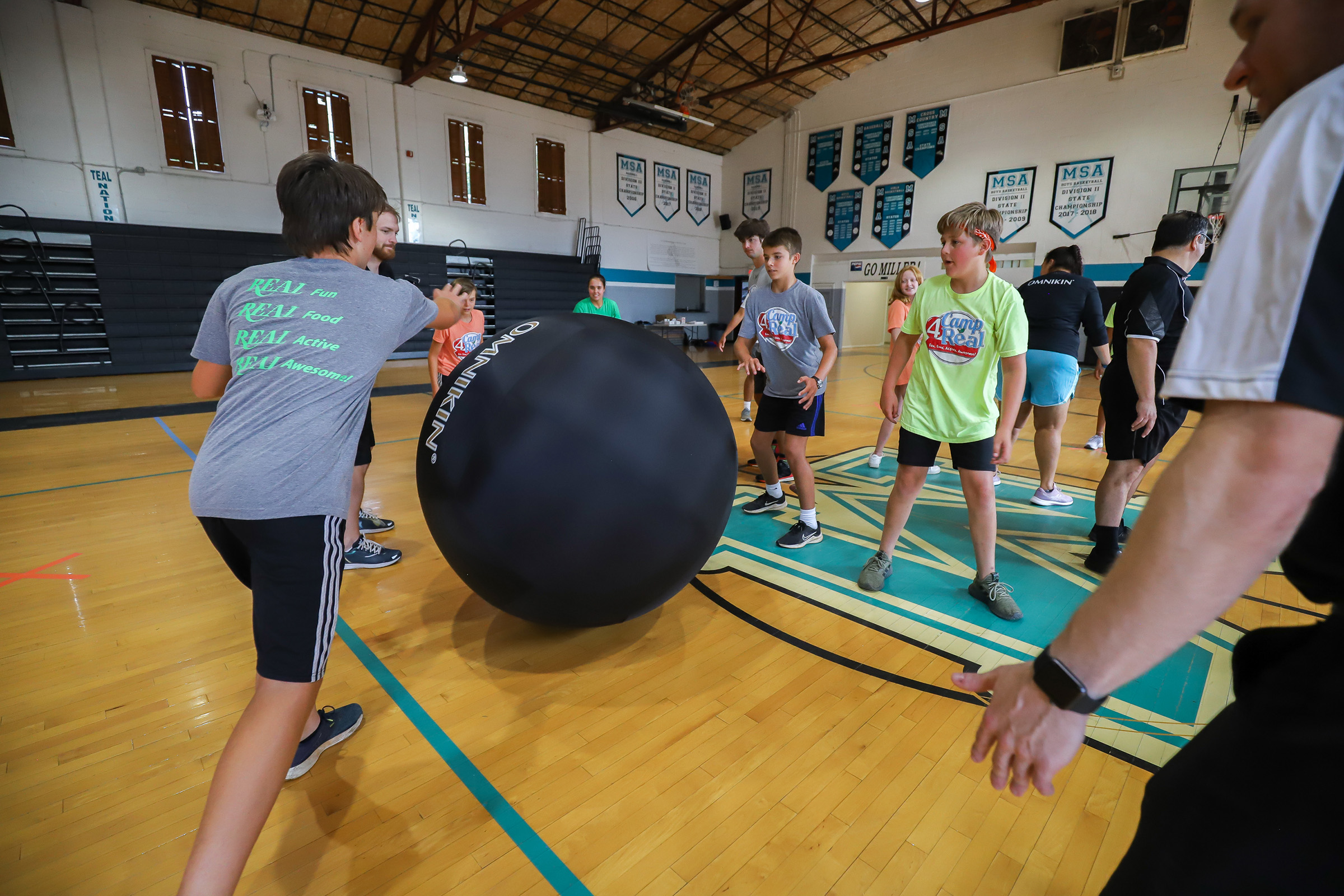
With physical inactivity costing the global economy nearly USD $70 billion in healthcare expenses and USD $14 billion in productivity losses, it stands to reason that quality physical education as a prevention and control method can offer a high return on investment for nations.
The benefits of adaptive PE classes go even further. Here’s why.
Obesity, anxiety, depression and attention deficit are becoming more prevalent with children and young people with disabilities, as per a recent article by KidsBrainHealth.ca. The article states that any type of game, workout or physical activity can improve the lives of disabled kids:
- Active children with disabilities grow stronger and remain physically literate
- Physical education can help support wellness and mental health, including stress, anxiety and depression
- Adaptive PE improves motor and cognitive skills, such as strength, stamina, balance, coordination, learning, cooperation, increased physical independence, etc.
- Being physically active contributes to boosting self-confidence and self-esteem
- Adapted physical education promotes social inclusion, communication and bonding with other students
- Mixing students with and without disabilities in PE classes gives typical students an opportunity to see past the disability and encourage a more humane treatment of those who do have limitations
Inclusive physical education indeed helps special needs kids to feel as though they are valuable members of their schools’ communities, enabling them to participate in PE games and activities, interact with peers, and developing meaningful friendships
How to Adopt an Inclusive or Adaptative Physical Education Culture
KidsBrainHealth.ca interviewed parents with special needs children and most said that PE classes were not adapted to them, which causes the vicious cycle of fear/feeling of failure, mockery, isolation, and increased behavioral problems.
“One parent told us: ‘I was so tired of this experience of trying something, and having my son feel like a failure because he can’t meet the expectations.” This mother and her son had both had enough. Their frustration is such a frequent experience it has triggered interest in improving crucial first experiences with sport for children of all abilities.”
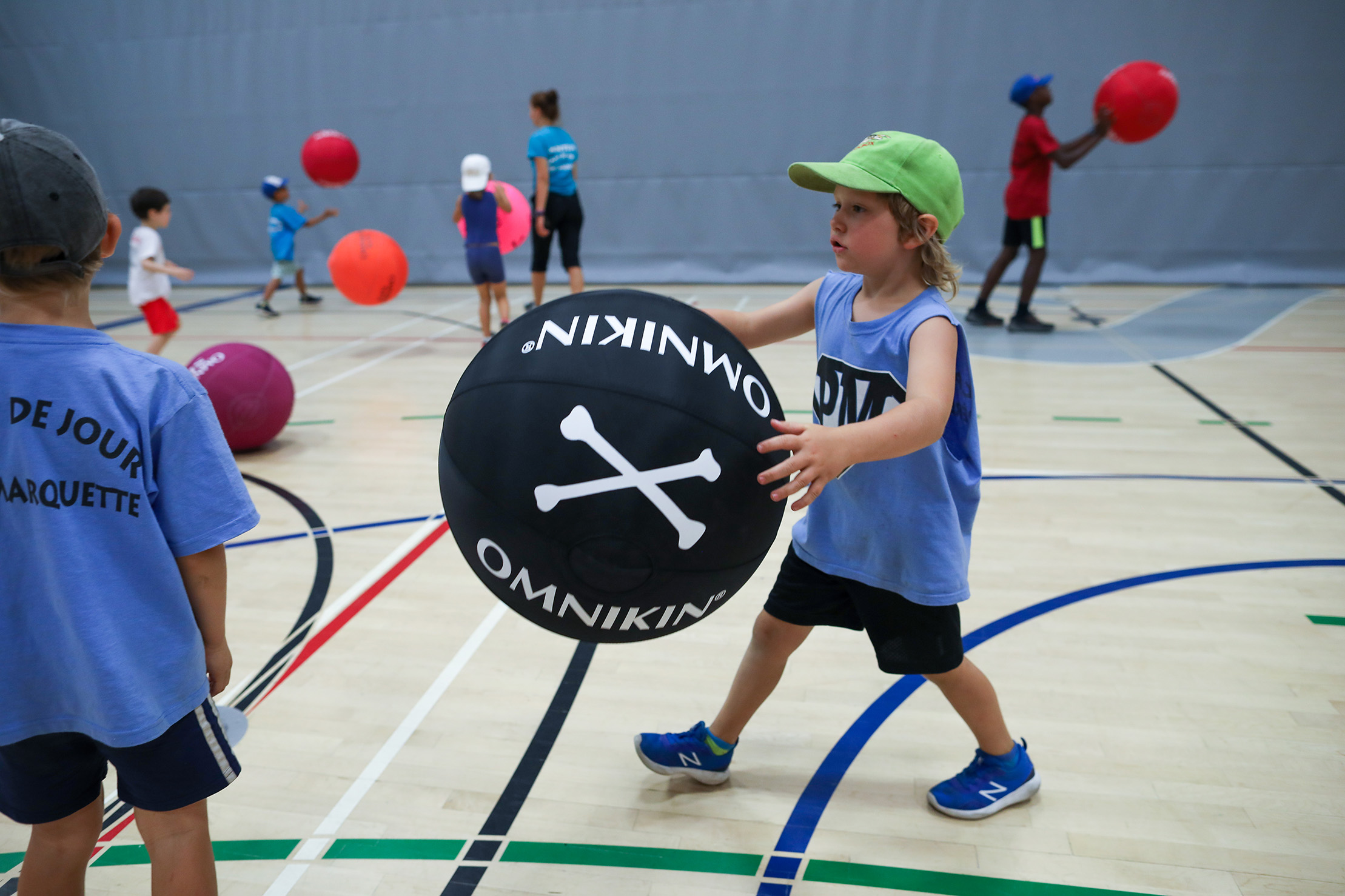
Sportanddev.org, an online website dedicated entirely to sports and development, points to several barriers to participation in a sport or PE class for disabled children. Some of the barriers are:
- Lack of early experiences in physical activity and sports
- Lack of understanding on how to integrate participants with special needs in regular classes
- Refractory attitudes towards disabled participants from other students and parents, teachers, and even educational institutions themselves
- Limited access to resources to affordably and easily develop programs for physical education activities, sports and competitions
In a shocking MSNBC investigation, researchers found that the average gym class in high school keeps regular students physically active for only 16 minutes—in a 45-minute period! Imagine what that means for disabled children in those very same classes!
So What is the Solution?
Depending on provincial and state educational regulations, many students with disabilities can participate in general physical education programs, as long as the curricula is fine-tuned to their special needs—and that PE teachers are properly trained to adapt their activities as well as foster cooperation and inclusion with other students.
PE teachers also need tools on how to extend the number of minutes kids are active in their classes through more accessible activities that stress fitness and fun, rather than “hardcore” performance and competition, which often appeal to only a select few with backgrounds in rigorous athletics and organized sports.
Ideas to Incorporate Adapted Physical Education in Regular PE Programs
With less emphasis on competitive team sports—and more on fun and learning lifetime fitness skills—PE teachers can start thinking outside the box on activities they can incorporate into their curricula.
Here are four Omnikin® games that many physical education professionals have tried with their students. The outcomes ranged from students who never wanted to participate before getting in on the action and having fun to a new level of cooperation and self-confidence never observed before in the past.
In fact, these PE activities can be used by special educators, recreational therapists, summer camp and campground instructors, physical therapists, kinesiologists, and mixed ability sports educators.
The Corridor
The Corridor game stands out because it can be played standing, sitting (even in a wheelchair), lying down and is actually very simple to handle the ball. The handling of the ball can be done without sudden gestures. It is also stimulating to the touch and does not require great motor skills or a lot of physical effort.
The Material You Will Need
You can use one of the following Omnikin products:
- Kin-Ball Sport Practice 33” Ball
- Multicolor 33” and 40” Ball
- Ultra 36” and 48” and 60” and 72” Ball
- Kin-Ball Sport Official Ball 48”
- Outside Kin-Ball Sport Ball 40”
- Street Kin-Ball Sport Ball 33”
HOW IT WORKS
Two lines are formed in which the players face each other; the distance between the 2 lines is equal to the width of the Omnikin® ball. This game is based on handling the ball. The players must carry the ball from one end of the human corridor to the other.
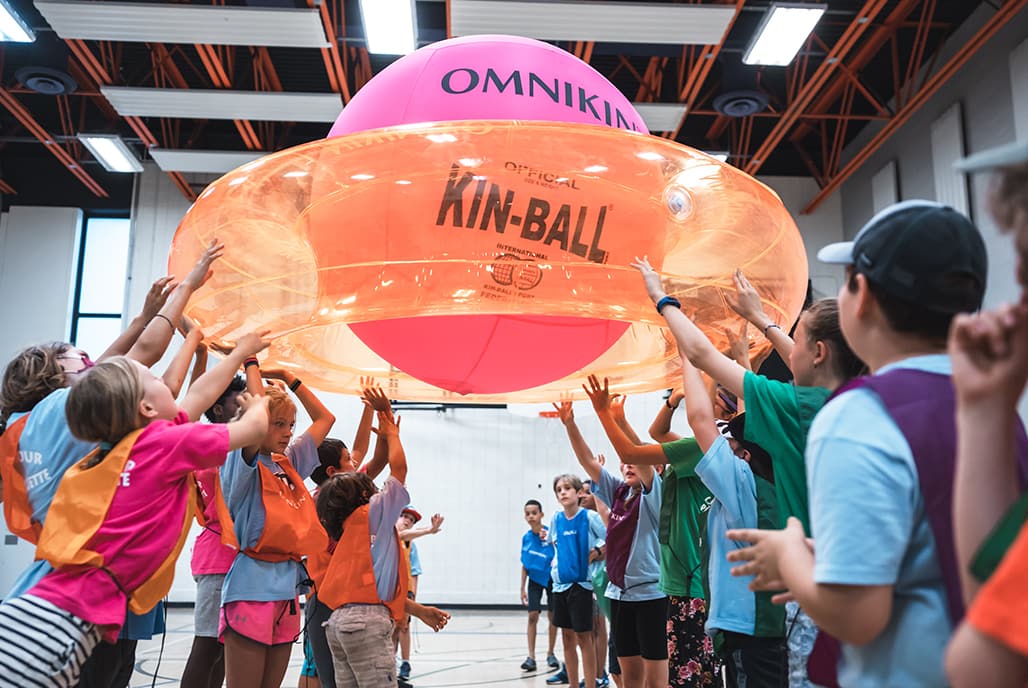
The Train
The Train requires some motor skills since in the game, participants have to stand up and lie down successively. It might be difficult to do with people in wheelchairs but not impossible. It has a strong touch stimulus (when the ball rolls over the participants) and is very simple to handle.
The Material You Will Need
You can use one of the following Omnikin products:
How it Works
All participants must lie down on the floor face up and shoulder-to-shoulder to form a human railroad. The Omnikin ball becomes the train to ride on the “rails.” However, the rails are too short for the train to reach its predetermined point of arrival. Participants will need to continue building the railroad by taking the rails that have already been passed over and bringing them back up front. This means that once the train has rolled over a participant, they must hurry up to the front to continue the railroad. The game ends when the set goal is reached.
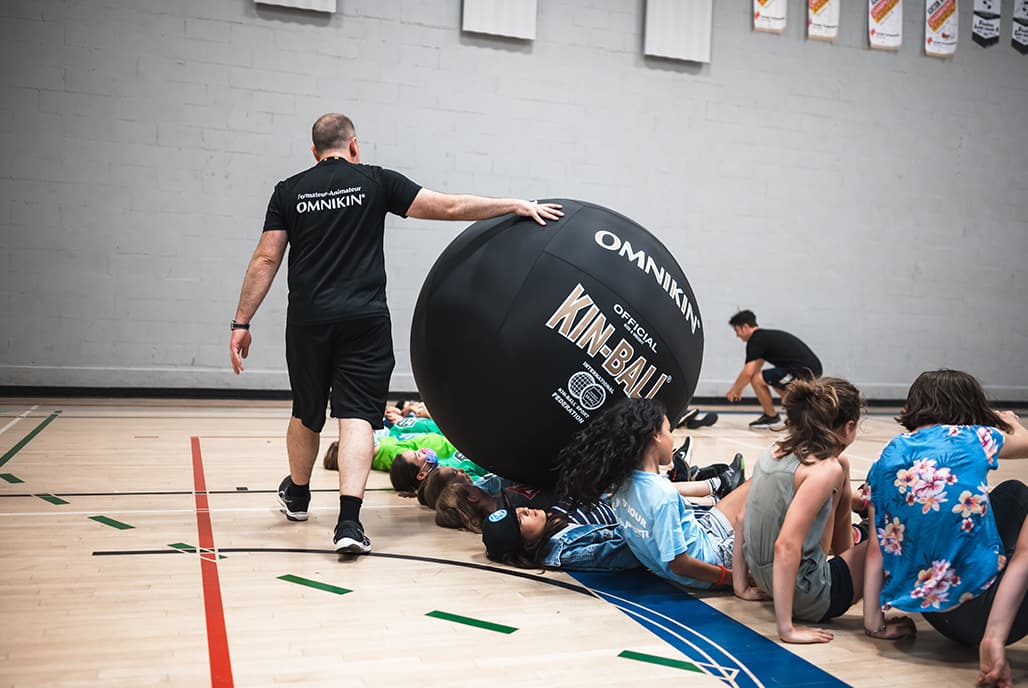
Hands Free
This game can be played with people in wheelchairs only, partially or with people who can move without any aids. Although it requires more communication than other games, it is very simple to explain and understand. The level of sensory stimulation is high and the motor skills required are light to moderate.
The Material You Will Need
You can use one of the following Omnikin products:
- Air 18-24”
- Omnikin Six
- Multicolor 24-33-40”
- Ultra 24-36-48-60-72”
- Kin-Ball Official 48”
- Kin-Ball Practice 33”
- Kin-Ball Outside 40”
- Street Kin-Ball
- Omnikin Fit Tpu 24”
How it Works
The goal is simple: participants have to find different ways of carrying the ball over a certain distance without using their hands! The group should be divided into sub-groups of 4 to 8 participants.
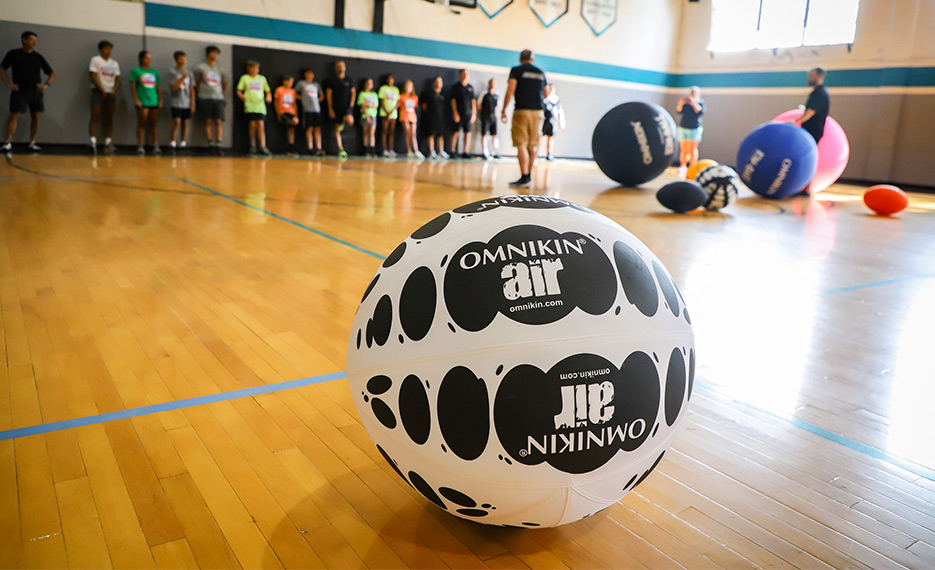
Monster Truck
Monster Truck is a game where the emphasis is on sensory stimulation. Participants have to lie down. The activity leader will come and move the ball on each participant by tapping it. Anyone who can lie down on their back can enjoy this game.
The Material You Will Need
You can use one of the following Omnikin products:
- Multicolor 33-40”
- Ultra 36-48-60-72”
- Kin-Ball Official 48”
- Kin-Ball Practice 33”
- Kin-Ball Outside 40”
- Street Kin-Ball
How it Works
Place participants in a circle and ask them to lie on their backs. Then, one by one, go around the circle, rolling the ball over their stomachs (not their faces). When you roll over the student, hit the ball with your hands.

Keep in mind that Omnikin balls are safe; they don’t generally hurt participants under the appropriate supervision. They are easy to handle and travel slowly, regardless of dexterity level. Many PE teachers have noticed that the unique and colourful balls actually draw kids into the activity and facilitate the enjoyment of participants with eyesight difficulties.
Since the balls are not perceived as threatening, some specialized educators have used the balls to calm children with special needs in a crisis situation, like a burst of anger or panic attack, through repetitive movements or even “massages” with the ball.
Adapted physical education is so important for future generations. As international organizations, such as UNESCO, continue the push to promote quality physical education (QPE) policies globally, the hope is that kids with special needs reap the same rewards of physical literacy as their peers.

Physical education teacher
International Workshop development coordinator
Profil LinkedIn
Interested in learning more about Omnikin’s work with adaptive PE classes?
Contact us today!